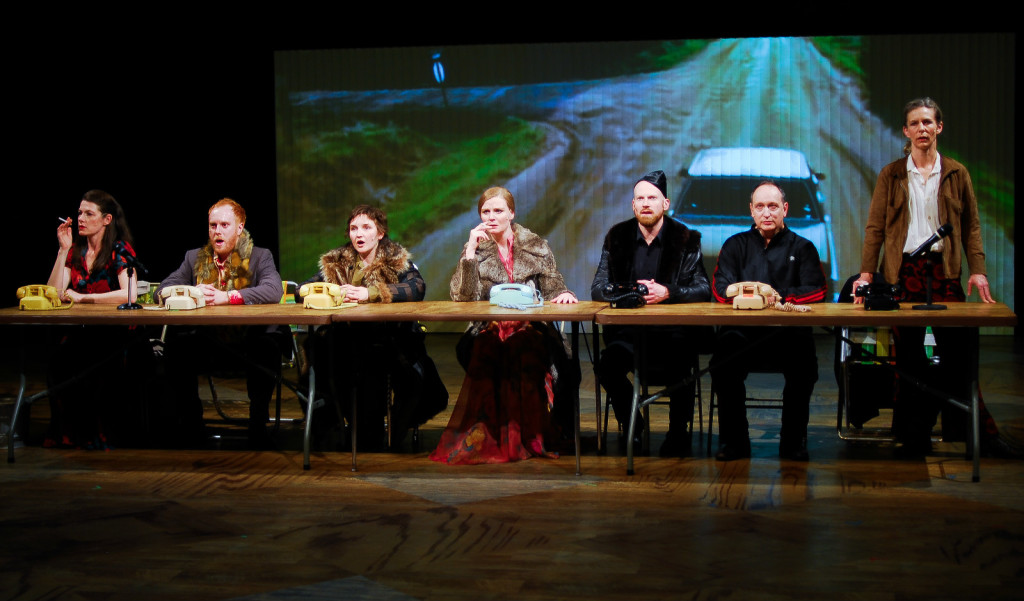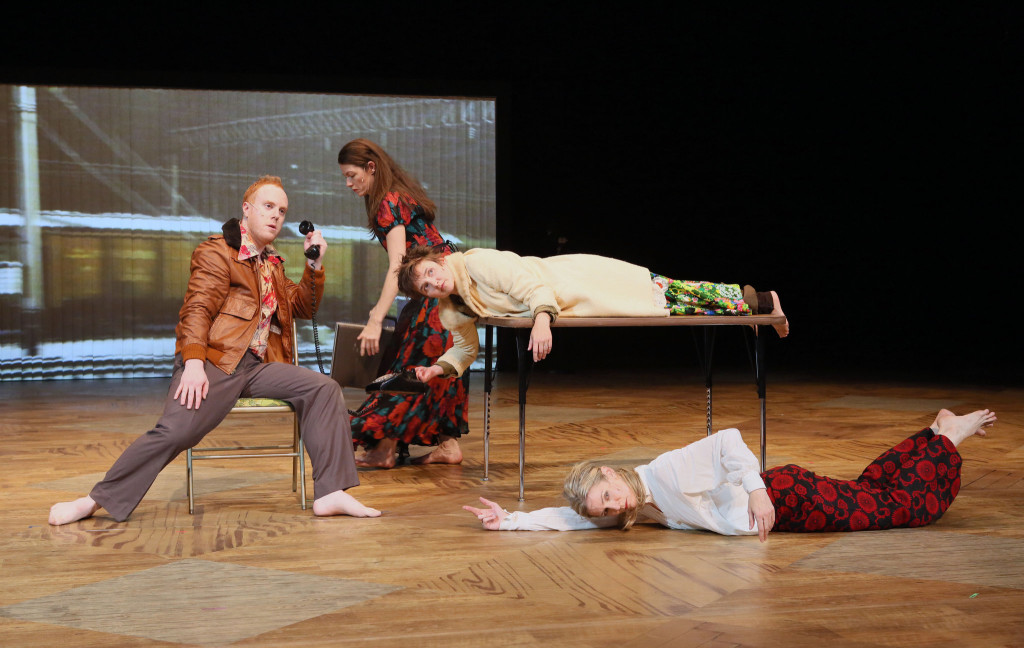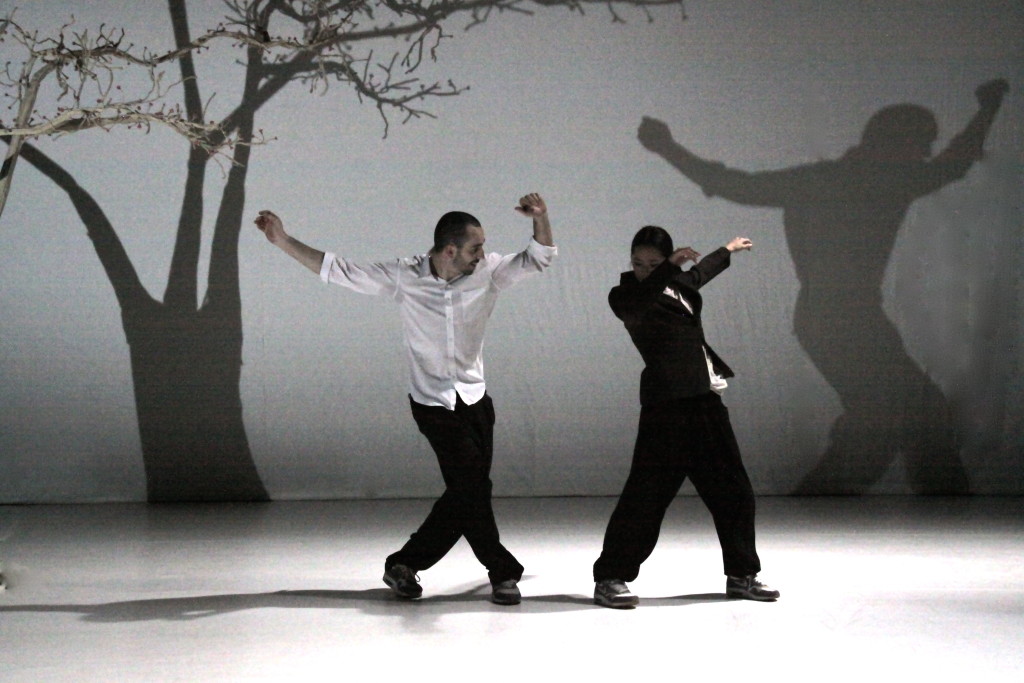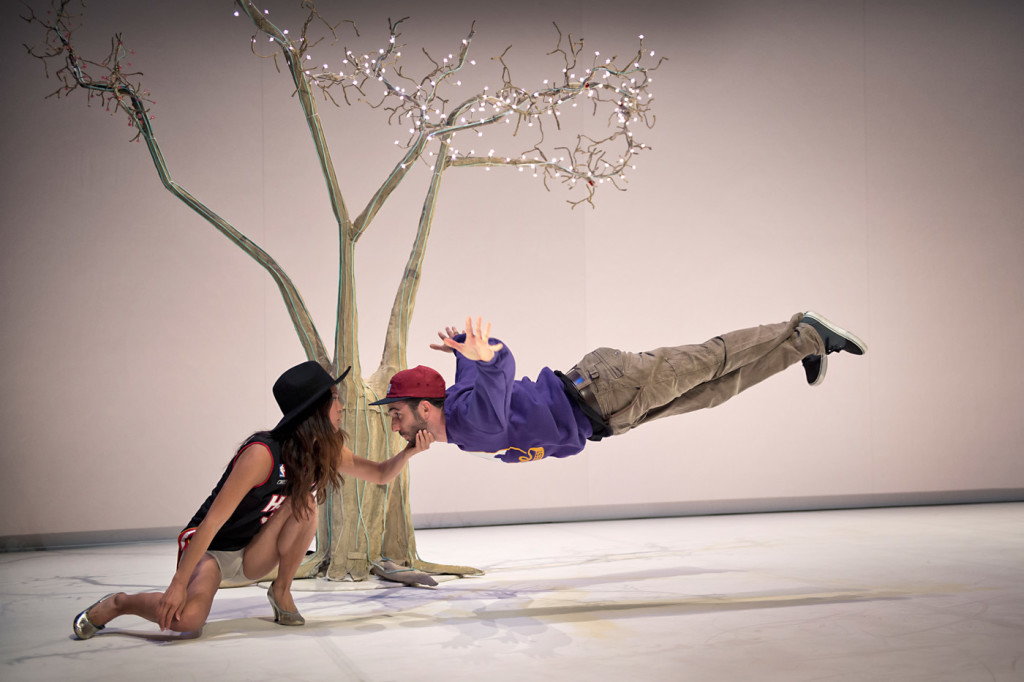I’m more a theater person than a dance person – though attending Jacob’s Pillow for the past three summers has given me a much greater appreciation for (and understanding of) the terpsichorean art. So this season I was especially interested in a couple of companies with “theater” in their descriptions.
Big Dance Theater combines movement and text in equal measure, deconstructing both and placing them in unusual, sometimes contradictory, juxtaposition. I’d seen them two years ago, when they brought Man in a Case, with an aging but agile Mikhail Baryshnikov, to Hartford Stage. This time, I was eager to see them in the Pillow’s dance-centered context.
That context was provided by Alan Smithee Directed This Play: Triple Feature – surely a candidate for the summer’s Most Deceptive Title award. The title’s “director” didn’t direct this piece at all – the troupe’s co-founders, Paul Lazar and Annie-B Parson, did. “Alan Smithee” is the movie industry’s conventional pseudonym for a director who doesn’t want his name attached to the final product (it’s an anagram of “the alias men”). And the subtitle previews the play’s sources: text drawn from the film Terms of Endearment and the novel Doctor Zhivago, with clips from the 1970 French crime thriller Le Cercle Rouge projected on a rear wall.
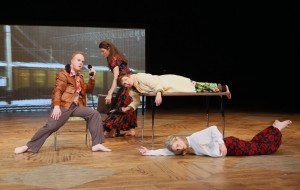 On stage, we saw lots of Russian-winter fur coats, lots of unison gesture and movement, sometimes in synch with the movie screen, lots of muted anguish, lots of telephones (a central image from Man in a Case was repeated, with actors seated at a long table with mics and phones) and lots of deadpan or caricatured expression. Parson’s work, as scholar-in-residence Philip Szporer explained in a pre-show talk, represents a move “away from emotionalism in dance.” Where contemporary dancers are increasingly portraying feelings in more than pure physical movement, Lazar, who was also one of the seven performers, was practically the only one who showed much genuine emotion.
On stage, we saw lots of Russian-winter fur coats, lots of unison gesture and movement, sometimes in synch with the movie screen, lots of muted anguish, lots of telephones (a central image from Man in a Case was repeated, with actors seated at a long table with mics and phones) and lots of deadpan or caricatured expression. Parson’s work, as scholar-in-residence Philip Szporer explained in a pre-show talk, represents a move “away from emotionalism in dance.” Where contemporary dancers are increasingly portraying feelings in more than pure physical movement, Lazar, who was also one of the seven performers, was practically the only one who showed much genuine emotion.
The movement sometimes seguéd into full-blown dance, and the spoken text was regularly overlaid with music, ranging from “Nights in White Satin” to “Lara’s Theme,” and often “slipping,” as if someone’s thumb were on the LP. I found it interesting and surprising, but a bit too determined to be oblique, even cryptic – especially if you weren’t already familiar with the source material.
The week after I saw Big Dance Theater, I returned for a performance of Monchichi by the interdisciplinary, multi-ethnic, biracial duo Wang Ramirez. They are Spanish-French Sébastien Ramirez and German-Korean Honji Wang, whose “collision of styles,” as the Pillow’s artistic director, Ella Baff, put it, is rooted in Hip Hop and the work of dance-theater pioneer Pina Bausch. Not only their performance, but their core aesthetic, arises from the conviction that in this globalized age, culture and the forms it takes are unavoidably mutable and permeable. This notion challenges the purists’ approach to classical form, but embodies the Pillow’s inclusive philosophy and its evolving, expanding definition of contemporary dance.
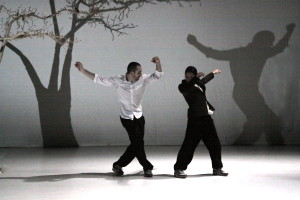 In their performance, Wang and Ramirez moved (and sometimes spoke) through a kaleidoscopic spectrum of physical and emotional relationships. A rather conventional opening of coy flirtation developed into a series of lithe interactions, from the subtly sinuous – reacting skittishly to the other’s slightest touch, creating a wave of motion with barely-touching fingertips – to the gasp- producing acrobatic.
In their performance, Wang and Ramirez moved (and sometimes spoke) through a kaleidoscopic spectrum of physical and emotional relationships. A rather conventional opening of coy flirtation developed into a series of lithe interactions, from the subtly sinuous – reacting skittishly to the other’s slightest touch, creating a wave of motion with barely-touching fingertips – to the gasp- producing acrobatic.
From semi-formal wear – he in white jacket, she in silver heels – they stripped down to breakdance gear and the Hip Hop roots came out. Even then, the style was an amalgam of American, European and Asian strands of breaking and popping, constantly inflected with echoes of other dance forms all the way back to classical ballet.
The Jacob’s Pillow season runs through this month, with programs that continue to underline its variety and versatility. This weekend’s two complementary programs of contemporary ballet, for instance, give way in the next two weeks to the Afro-Latin Malpaso Dance Company of Havana and La Otra Orrila flamenco troupe.
This kind of stylistic and cultural diversity, as Baff put it in a recent curtain speech, “is why there is a Pillow, and why you’re here.”
If you’d like to be notified of future posts, email StageStruck@crocker.com

